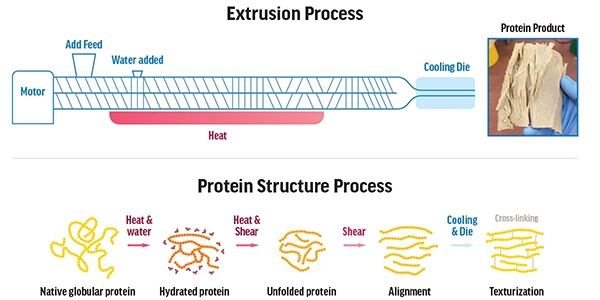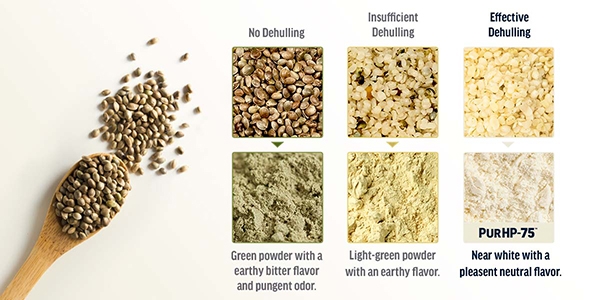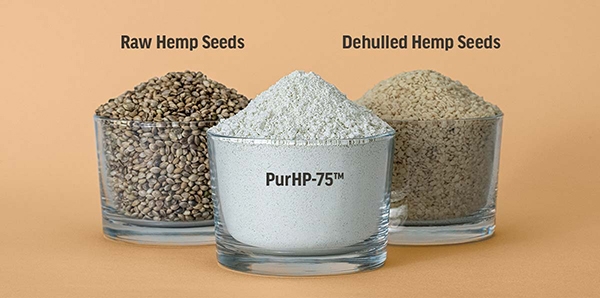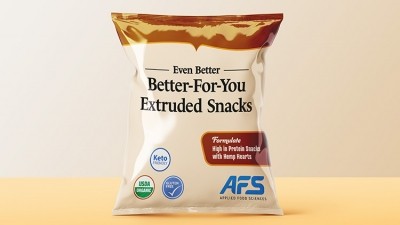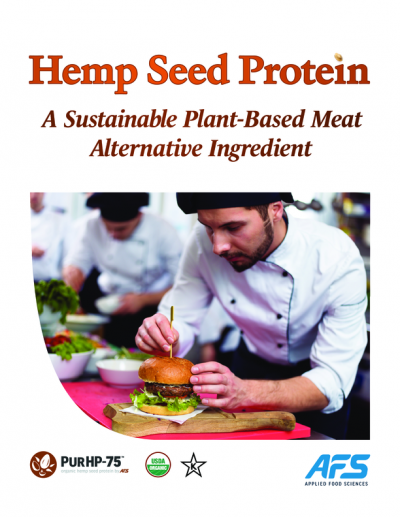Promotional Features
The Heart of Plant-Based Meats
For most consumers, the importance of meat alternatives is not about eliminating animal products but rather diversifying their diet. IRI reports that 58% of consumers want to increase plant-based food intake, and close to one-third of all shoppers explicitly target plant-based meats. Adopting a flexitarian lifestyle is made easier thanks to the more plant-based options available on the market. For instance, Impossible Foods' 2021 retail sales are up 85% year over year, contributing much of their success to being available in 20,000 grocery stores and 40,000 restaurants.[i] But as they say in the food industry, "taste is king," and brands can only earn consumer retention through continuous improvements in flavor, texture, and quality of their meat analogues. Therefore, most alternative meat manufacturers are looking closely at new ingredient innovations.
Making Meat Analogues
The use of meat substitutes in food products, also known as meat analogues, is not a recent development; it began in the early 1960s. The use of soy protein in tofu and tempeh, for instance, can be traced back to Southeast Asia, dating back to 965CE.[ii] With time, meat analogue formulations and processing conditions are constantly tuned to more accurately mimic real animal meat texture and bite.
No disrespect to the original veggie burgers, but consumers may never settle for dry, puck-like patties again... not after trying an Impossible Burger, Beyond Burger, or any number of emerging gourmet brands available today.
Although there have been numerous technological advancements in manufacturing meat analogues (e.g., spinning or/and shear cell techniques), extrusion remains the most extensively used method for plant-based materials. Extrusion is a process that utilizes high heat and pressure to texturize vegetable protein with water into a product with a fibrous consistency like animal meat.[iii],[iv],[v]
The Heart of Plant-Based Meats
Ingredient properties play a tremendous role in an alt meat product's success. Austin, TX-based Applied Food Sciences (AFS) have found the recipe for success in their new organic hemp seed protein, according to Brian Happel, the Director of Nutrition. The company deliberately calls attention to the source for its latest plant protein, 'hemp hearts,' as necessary because it comes from the dehulled inner-white parts of the hemp seed.
"We wanted to create something that was food-driven, so taste was paramount," Happel explains. "For hemp seed protein, this means removing the outer shell and ample color sorting to present a clean ingredient that is white instead of green and is void of bitter flavor typically associated with hemp protein."
Mintel reports that taste is the number one reason consumers continue to eat plant-based proteins. Therefore, formulators using plant-based ingredients must be cautious not to contribute to any bitter, pungent off notes and have a minimal color impact on the final product. Right behind taste is obtaining realistic meat textures.
"It is important to remember that the end product's consistency goes hand in hand with flavor for meat alternatives," Happel continues. "And what's unique about our organic hemp seed protein is its exceptional emulsification and gelling properties, which results in a juicier, more authentic bite and mouthfeel."
AFS recently launched its branded PurHP-75™ organic hemp seed protein. The new high purity hemp heart protein is a concentrated 75% protein, complete with all nine essential amino acids. The most evident difference in PurHP-75™ compared to other hemp seed proteins comes from their superior dehulling process resulting in neutral flavor and enhanced functional attributes.
More on Hemp Hearts
Hemp seeds are considered a nutritional powerhouse full of proteins, amino acids, and fatty acids. Hemp seeds contain more protein wt/wt than almonds, chia, or flax seeds, mostly made up of Edestin and Albumin, a form of easily digestible globular proteins. The fats in hemp seeds are almost entirely polyunsaturated fatty acids (PUFAs) that our bodies can't make and are therefore essential for consumption in our diet. Hemp seeds also contain minerals necessary for our health like vitamins, iron, magnesium, zinc, potassium, and more. Some minerals can be hard to obtain on a plant-based diet making hemp an attractive ingredient option for plant-based meat producers.
Even more significantly, the EAA found in hemp are nutritionally sufficient to meet the requirements for adults and adolescents recommended by the Food and Agriculture Organization (FAO)/World Health Organization (WHO) in the PDCAAS score. The removal of the hulls (shell) prior to protein extraction has been demonstrated to improve protein digestibility by removing non-digestible fibers.[vi], [vii], [viii]
About Applied Food Sciences
For over 20 years, Applied Food Sciences has manufactured functional ingredients for the natural products industry. PurHP-75™ organic hemp seed protein is the latest example of the company's innovative and on-trend products. If you are developing a plant-based food, more information can be found on the company website, including a form to request samples.
-----
References:
[i] Tepper, Taylor. 2022. Impossible Foods IPO: What You Need To Know
[ii] Ismail, I., Hwang, Y.H., and Joo, S.T. 2020. Meat analog as future food: a review. Journal of Animal Science and Technology, 62, pp. 111-120.
[iii] Ferawati, F., Zahari, I., Barman, M., Hefni, M., Ahlstrom, C., Witthof, C., and Ostbring, K. 2021. High-moisturemeat analogues produced from yellow pea and faba bean protein isolates/concentrates: Effect of raw material composition and extrusion parameters on texture properties. Foods, 10, 843.
[iv] Ubbink, J. and Munialdin, B. Protein physical state in meat analogue processing. 2022. Current Opinion n Food Science, 45, 100822.
[v] Vatansever, S., Tulbek, M.C., and Riaz, M.N. 2020. Low- and high-moisture extrusion of pulse proteins as plant-based meat ingredients: A review. Cereal FoodsWorld, 65.
[vi] Boukid, F. Plant-based meat analogues: from niche to mainstream. 2021. European Food Research and Technology, 247, pp. 297-308.
[vii] Shen, P., Gao, Z., Fang, B., Rao, J., and Chen, B. 2021. Ferreting out the secrets of industrial hemp protein as emerging functional food ingredients. Trends in Food Science & Technology, 112, pp. 1-15.
[viii] Wang, Q. and Xiong, Y.L. 2019. Processing, nutrition, and functionality of hempseed protein: A review. Comprehensive Reviews in Food Science and Food Safety, 18, pp. 936-952.



